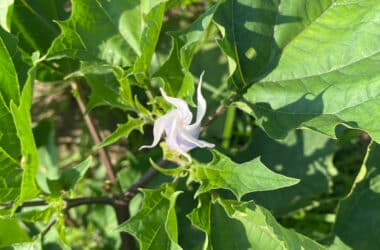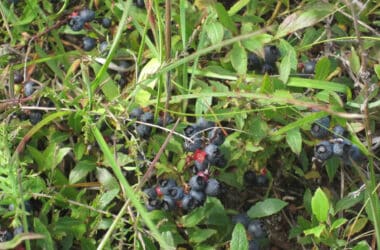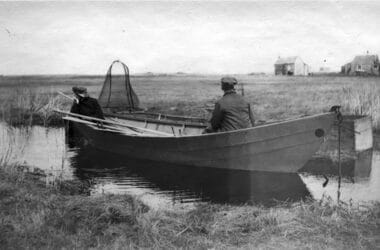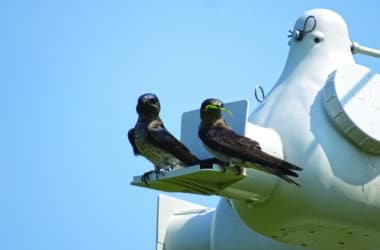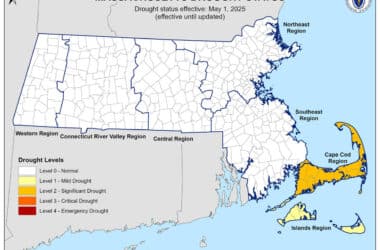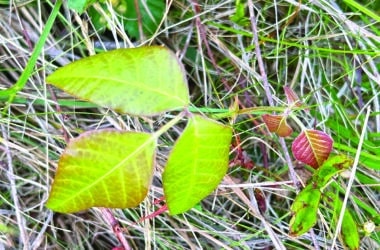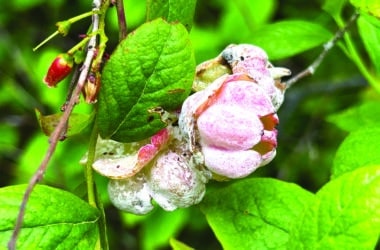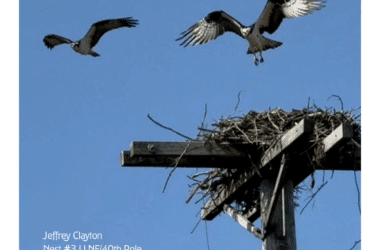In our society we tend to idealize and idolize pioneers. Think of those intrepid travelers who went west in the mid-1800s. Or those who explored somewhere for the first time. It takes a certain character to be the first to do something: not only spunk, but grit and determination. If you’re the first to settle in a new area, you have to figure out space, resources, safety. How are you going to survive? We admire these qualities in people who start from scratch, find new territory, put a flag on the moon.
Island Science
July on Nantucket Is a Forager’s Paradise
I am spoiled this time of year, lucky to be working out on the Linda Loring Nature Foundation landscape or going out for walks with my dog on one of the various conservation trails around the island. This time of year, mid- to late-July is when the berries are at their peak, and I can easily find a snack while out in the hot summer sun. It’s a fun time to start foraging for your snacks.
Secrets of the Ditch
The Madaket Ditch…it doesn’t have a very sexy name, but it is one of the most fascinating and vital parts of the western end of our island. For something so essential to the water quality of Long Pond, it is an often-missed feature of the landscape. Most islanders and visitors have never even seen it.
If You Build It, Purple Martins Will Come
Purple Martins have arrived on Nantucket for the first time ever. After three years of conservation efforts to support breeding habitat for the species, they have finally “set up house” at the Linda Loring Nature Foundation, primarily due to the efforts of Libby Buck, Conservation Science and Land Steward with LLNF.
Water, Water, Everywhere, But…
Last week, Nantucket was placed under a Level 1 drought by the Massachusetts Drought Management Task Force, prompting mandatory restrictions on outdoor water use. Then, over last weekend, we learned that the town’s primary water pump suffered a mechanical failure, leaving the island’s water storage tank at “critically low” levels. The ensuing water use ban has included all non-essential water use, and applies only to properties connected to the municipal water system.
It’s a Love-Hate Relationship
As June settles into true summer, the flora of Nantucket really comes alive. The beach roses scent the air along the dunes, our yellow thistles open for pollinators, and the golden heathers carpet the moors. This past week, while enjoying the early summer splendor, another blossom caught my eye: small clusters of whitish-green, each flower only ¼-inch in size. The delicate five-petal flowers aren’t showy or brightly colored, but they are pleasant, gently draping in small clusters. These flowers, however, aren’t the kind to put in an arrangement or bouquet. These deadly beauties actually belong to the poison ivy plant.
Zombie Apocalypse or Just Our Island Spring?
The zombie apocalypse has been on my mind a lot lately. That may sound dramatic, but if you’re someone who reads and watches fiction like The Last of Us, 28 Days Later, or the sequels: 28 Weeks Later and the new 28 Years Later, you know that the zombie hordes are all around us. For those who don’t know what I’m talking about, a lot of zombie or similarly-themed fiction base their monsters around the idea of humans being infected by something which takes over their brain function. And, like all of the scariest things, that fiction has some basis in fact.
Call of the Osprey
A familiar sight along the harbor and around our many ponds, Ospreys are a common site as they dive for fish across the island. Ospreys (Pandion haliaetus) are iconic on-island, a part of our maritime community. Also known as Fish Hawks, they are abundant on Nantucket this time of year, having migrated back this way in late March. While these majestic birds of prey are now a fixture of early spring and summer on the island, that was not always the case.

